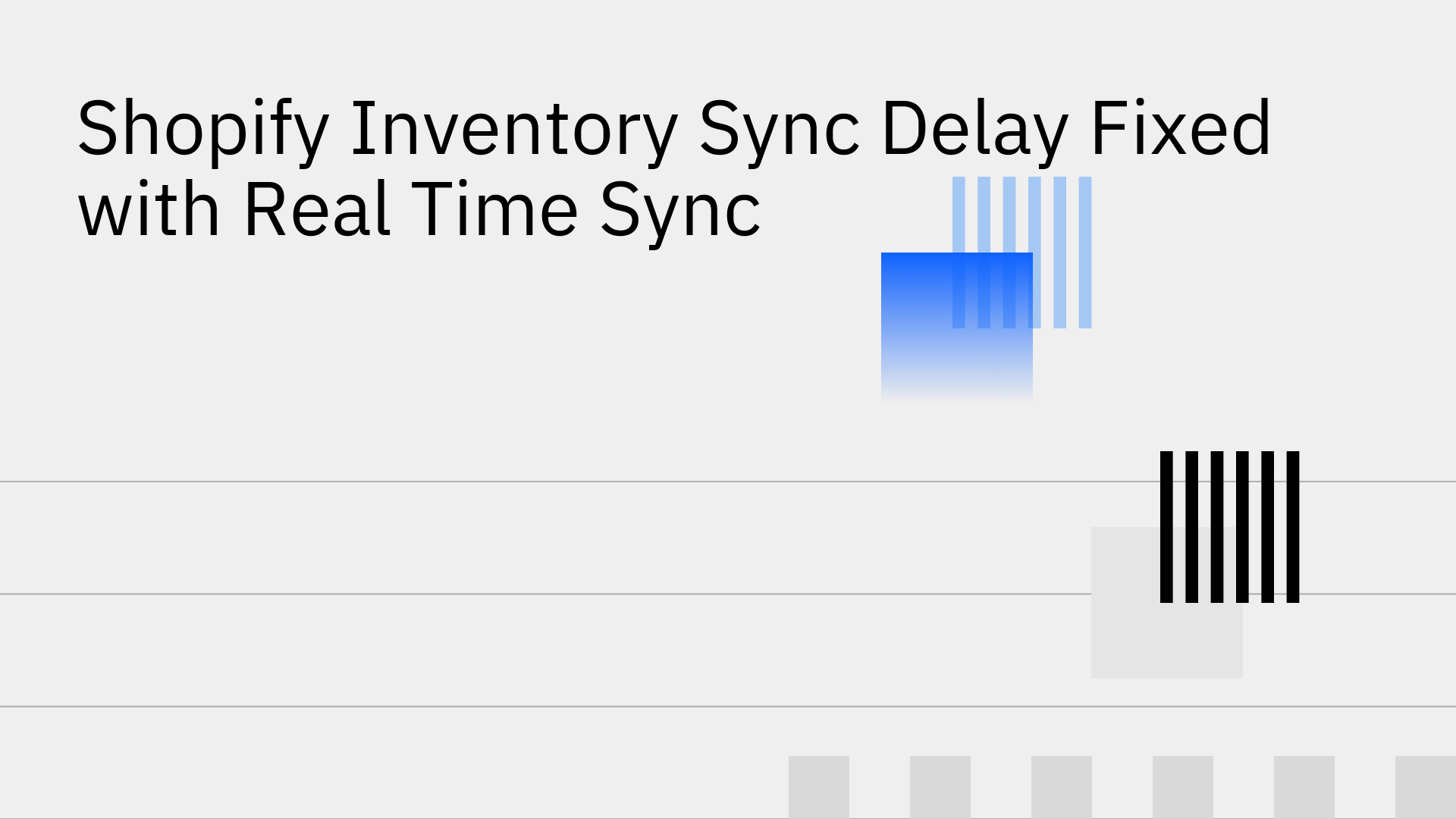
For Shopify merchants, few problems are as damaging as inventory synchronization delays. These lags lead directly to overselling popular products, forcing you to cancel orders and frustrate loyal customers. The result is lost revenue and a tarnished brand reputation.
As businesses scale by adding new sales channels, physical stores, or a warehouse management system (WMS), these sync issues become more frequent. Inventory management is a significant struggle for modern e-commerce businesses, and these operational inefficiencies can hinder growth [2].
Sync delays are not random; they stem from specific technical and operational bottlenecks that prevent your systems from communicating efficiently. Understanding these root causes is the first step toward implementing a permanent solution.
Shopify, like most SaaS platforms, enforces API rate limits to maintain platform stability for all users. High-volume stores or third-party apps that make frequent data calls can quickly exceed these limits. When an application is throttled, its ability to send or receive data is paused, creating a backlog of updates. This is a common cause of slow or delayed syncs, especially during peak sales periods or when managing large product catalogs [4].
Many integrations and middleware applications do not sync data instantly. Instead, they rely on "batch processing," where data is collected and transmitted in chunks at scheduled intervals. Some platforms run delta syncs every 15 minutes, with inventory updates taking up to 30 minutes to appear [5]. Other tools are configured with even longer sync intervals of 30 minutes or more by default [6]. This built-in latency means your inventory levels are never truly live, creating a constant risk of overselling out-of-stock items.
As operations grow, so does the complexity of the tech stack. Juggling Shopify with a separate ERP, a third-party logistics (3PL) provider, and physical retail locations creates data silos. Without a unified system, teams often resort to manual CSV uploads or data entry to reconcile inventory. This process is not only slow and inefficient but also highly susceptible to human error, leading to unfulfilled orders, unnoticed stockouts, and what can quickly become operational chaos [7].
The definitive solution to eliminating Shopify inventory sync delays is to move beyond legacy batch processing and adopt a true real-time, two-way synchronization platform. Stacksync is engineered to solve this exact problem, ensuring data is updated across all connected systems in milliseconds, not minutes. This creates a single, reliable source of truth for your entire inventory operation. With a robust Shopify two-way sync integration, you can permanently resolve the root causes of sync lag.
Stacksync is purpose-built to address the technical bottlenecks that plague standard Shopify integrations. Its architecture provides immediate and tangible improvements to your data infrastructure.
Fixing sync delays is just the beginning. Real-time data synchronization is the foundational layer for building a fully automated and scalable e-commerce business. Stacksync provides the tools to move from reactive problem-solving to proactive operational excellence, offering powerful integrations designed for the unique demands of the e-commerce industry.
The true power of real-time sync is realized when you connect Shopify to your other critical business systems. With Stacksync, you can unify your storefront with your ERP (like NetSuite), your CRM (like Salesforce), and your operational databases. This enables complete, end-to-end workflow automation—from instant order processing and fulfillment updates to syncing customer data for targeted marketing campaigns. As an example, you can achieve a seamless, real-time connection between your Shopify storefront and your back-office financials with a NetSuite Shopify integration.
Stacksync is built to handle enterprise-level scale, capable of syncing millions of records without performance degradation. This resiliency gives you the confidence to grow your business.
With a unified and real-time data backbone, you can improve customer satisfaction with accurate stock levels and fast shipping updates, reduce manual workloads for your e-commerce team, and confidently add new sales channels without risking operational failure.
A Shopify inventory sync delay is a direct threat to your revenue and customer loyalty, but it is an entirely solvable problem. Legacy, batch-based integrations are no longer sufficient for the demands of modern, multi-channel e-commerce.
Stacksync provides the operational foundation required to achieve true inventory accuracy and scale your business with confidence. Stop letting sync lag dictate your sales potential. Explore the Stacksync data synchronization and workflow automation platform and see how real-time integration can transform your operations.